How To Select and Leverage Customer vs. Enterprise Product Management Tools

Product teams rely on a variety of tools to effectively perform their role.
These tools vary in their capabilities as they support product managers with fulfilling key responsibilities, such as capturing user feedback, crafting roadmaps, measuring data, and more.
While there are various types of product management tools on the market that fall within various categories, two key categories of these tools are: customer product management tools and enterprise product management tools.
In this article we’re going to cover the importance of customer and enterprise product management tools, how to select the right one for your team, and share a few notable product tools to consider.

Customer vs. enterprise product management tools
Customer product management tools focus on the interaction between the product and the customer, enabling product managers to cater product(s) to customer needs and preferences.
With these tools product teams gain visibility into how their customers and users utilize their product(s), and their preferences, and empower them with feedback that builds the roadmap to solve further customer problems.
While enterprise product management tools also accomplish this, they have a much different focus due to the size and makeup of their business.
Enterprise product management tools generally focus on the following 3 areas:
1. Collaboration: gathering feedback from various stakeholders, departments, and functions for optimal decision-making.
2. Project management: to ensure that critical initiatives have a path to success and the dependencies are clear.
3. Cross-functional communication: with the main employees, teams, departments, and sometimes locations that makeup enterprise businesses, this is for overall business success.
Choosing the right customer product management tool
There are many customer product management tools on the market. Here are the 6 key areas that you should consider when looking for the right tool.
1. Ease of use
Product teams ensure that they build products that are easy to use, however, they should also use products that are easy to use. The easier the product is to use, the more likely it will be adopted and used.
This is beneficial for other stakeholders that may use these tools as well. For example, customers interacting with user feedback software such as FeedBear, where they can directly provide their feedback to product teams.

2. Capture customer feedback
Customer feedback is a gift that enables product teams to ensure that they are solving key problems and helps inform the roadmap.
Along with enabling users to provide feedback, additional beneficial features here include the ability for customers to vote for features and receive notifications when there are updates to their requests.
3. Data analysis
As Jim Barksdale, the former CEO of Netscape said: “If we have data, let’s look at the data. If all we have are opinions, let’s go with mine.”
Data enables product teams to make decisions and confirm success. Qualitative feedback is a gift, and quantitative data is gold.
4. Reporting
Tools such as Pendo capture data and produce easy-to-use out-of-the-box reports that product teams can customize and share with key stakeholders. Reports are especially beneficial at the end of the quarter, or those critical meetings, where product teams must speak on key metrics such as user adoption and engagement.
5. Integrations
Leverage a tool that supports integrations, where you can integrate with the other key tools that other functions of the business rely on as well.
With integrations, information can seamlessly flow across the suite of tools that your cross-functional teams rely on.

6. Scalability
It’s the nature of businesses to grow, customers and users to grow, tools to grow, integrations to grow, etc.
Plan ahead and save yourself the hassle of finding a new tool each time your business grows; use a tool that scales with your business, products, and teams.
3 Top customer product management tools
Now that you have an understanding of the various areas to look at when choosing a customer product management tool, let’s highlight some of the top ones in the market.
1. Pendo
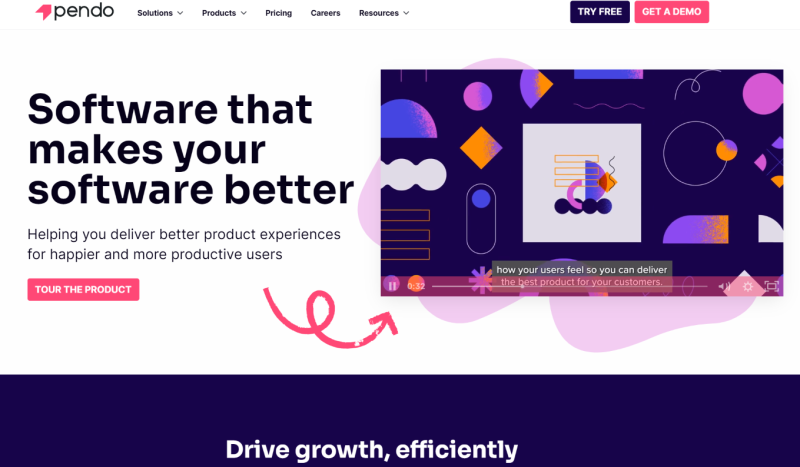
Businesses need an easy way to quickly gather customer and user insights to improve their user experience. This is where Pendo shines, being a market leader in this space by giving product teams the power of data to make more informed decisions.
For product-led companies, it provides use cases for user onboarding, in-app messaging and support, product-led growth initiatives, data analysis and reporting, and more.
2. Canny.io
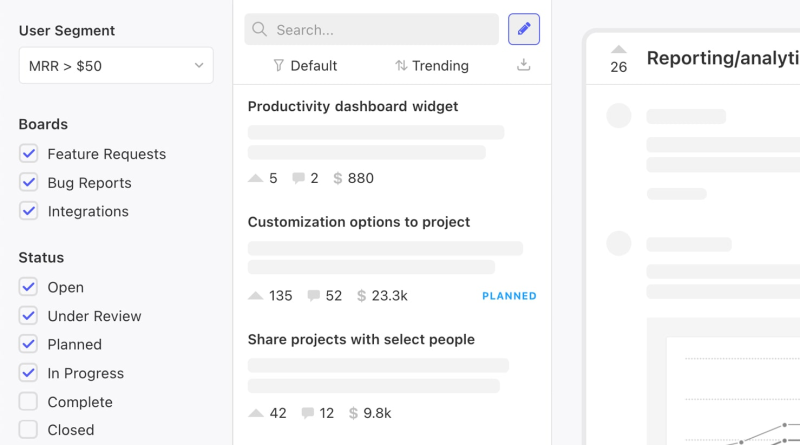
Canny enables product teams to capture, organize, and analyze product feedback in one central location for decision-making. Embed it directly into your product, capture user feedback, and prioritize via user votes. It also has basic roadmapping capabilities.
3. Hotjar
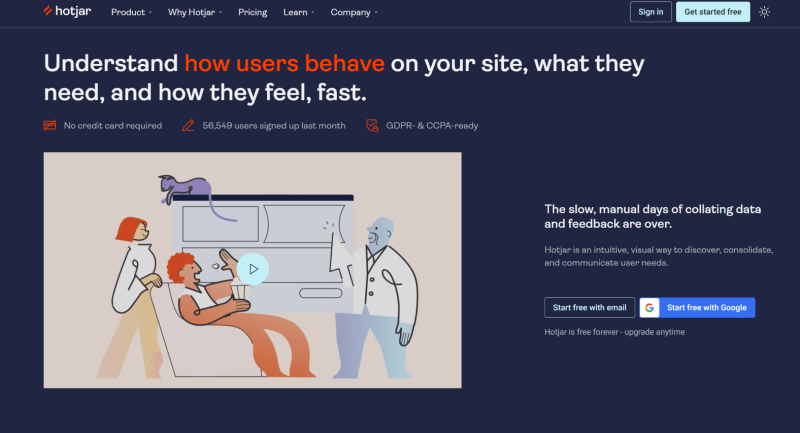
With Hotjar product teams can visually see user needs. They can visualize user behavior via heatmaps, record user sessions along with mouse clicks, capture real-time feedback, and connect with users with automated recruiting, scheduling, and hosting of interview sessions.
Choosing the right enterprise product management tool
Given that enterprise businesses have different needs than others, there are a different set of criteria to look at here.
Here are the 6 key areas to consider when sourcing an enterprise product management tool:
1. Project management capabilities
Enterprise companies have large initiatives which are often costly, time, people, and resource intensive. For this reason they require detailed plans to ensure success. With project management capabilities you can track progress, dependencies, and identify risks for mitigation.
2. Team collaboration
This is even more imperative for enterprises due to the many employees, teams, departments, and functions. Communication must flow for cross-team collaboration and dependencies.
3. Roadmap planning and visualization
With multiple products offered, multiple customers and locations served, the ability to craft visually appealing roadmaps that are easy to understand gives stakeholders (internal and external) confidence in future plans. Key for support and success.
For an understanding of why this is key, take a look at Microsoft 365’s public facing roadmap.
4. Reporting
Reporting capabilities that are robust enough to report on the needs of the enterprise as a whole, and its various parts and functions. For example, reporting on different regions, projects, device types, users, etc.
5. Security
Without strong security customer data across regions can be leaked as well as critical business information which can harm strategic initiatives. Not only sensitive customer data, but internal data as well.
6. Scalability
For an enterprise product management tool you need to consider whether it can handle the amount of data that you need to support and integrations required. Confirm that the tool was built to support enterprise needs.
3 Top enterprise product management tools
Here are 3 of the top enterprise product management tools in the market.
1. airfocus

airfocus is a modular product management tool; you can build it to fit your team, department, and company’s best practices. With top notch security, multiple integrations, and a powerful OS that scales with businesses, it’s perfect for enterprises.
Modern product teams rely on airfocus for product planning. Crowdsource feedback from customers and internal stakeholders via insights and Portal, prioritize product backlog items with priority poker, and communicate the product strategy with one of its ready-made out-of-the-box roadmap templates.
2. Productboard
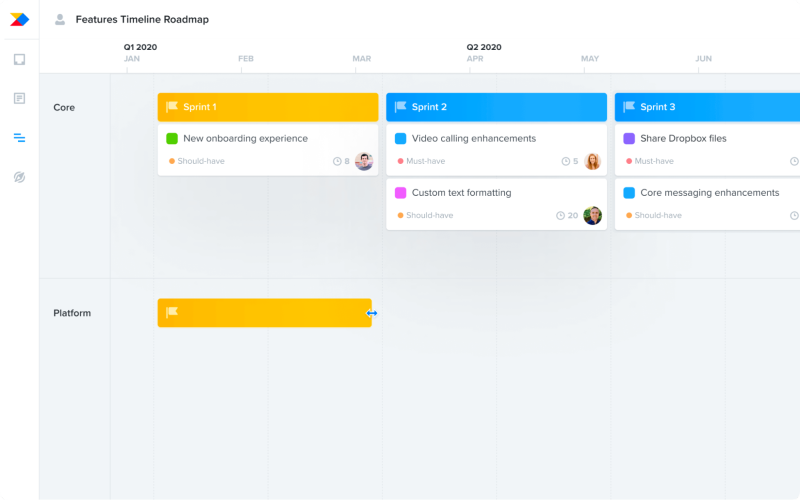
Productboard is an end-to-end product management platform built for product teams to gather insights, prioritize, and align stakeholders with roadmaps. Trusted by 6,000+ customers, it supports enterprises with services which include onboarding, customer success, priority support, and more. It also integrates with multiple tools that enterprises rely on, has API support, and is built with high security standards considering product, cloud, and application security.
3. monday.com
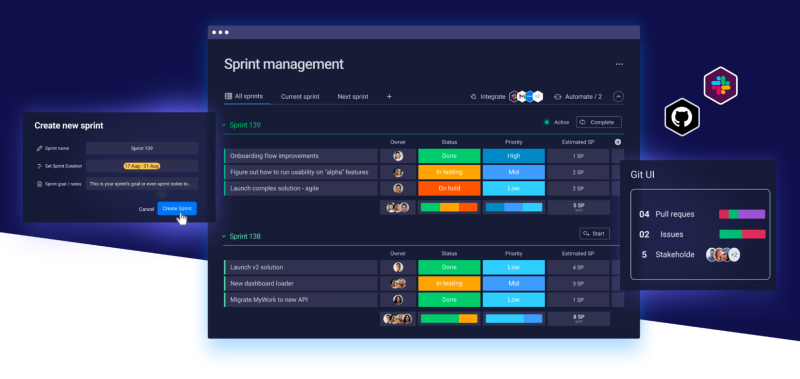
As an open platform, monday.com users can create the tools they need to get their work done with an interface that supports building blocks and integrations for teams to customize their work. Enterprise product teams can rely on monday.com to create roadmaps, manage their feature backlog, track bugs, communicate with development teams, facilitate agile processes, and more.
Conclusion
With customer product management tools product teams can gather customer insights and cater their products directly to customer preferences.
Enterprise product management tools on the other hand, while supporting this as well, place more of a focus on the needs of enterprise companies and the many customers and stakeholders they serve. Focusing on areas such collaboration, project management, and cross- functional communication.
While there are many tools that are available for both customer and enterprise product management tools on the market, when considering which tool to use, consider the criteria we laid out in this article.
Set you and your product team(s) up for success by choosing the tool that is right for your business and product needs.

Quadri Oshibotu

Read also





Experience the new way of doing product management

Experience the new way of doing product management


